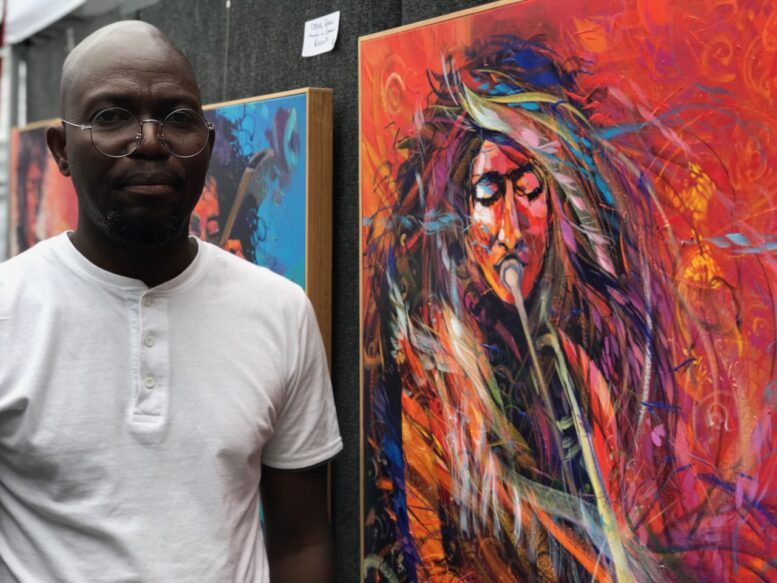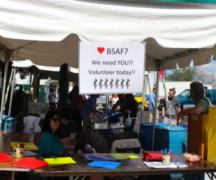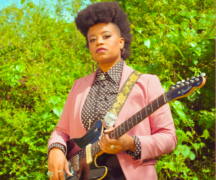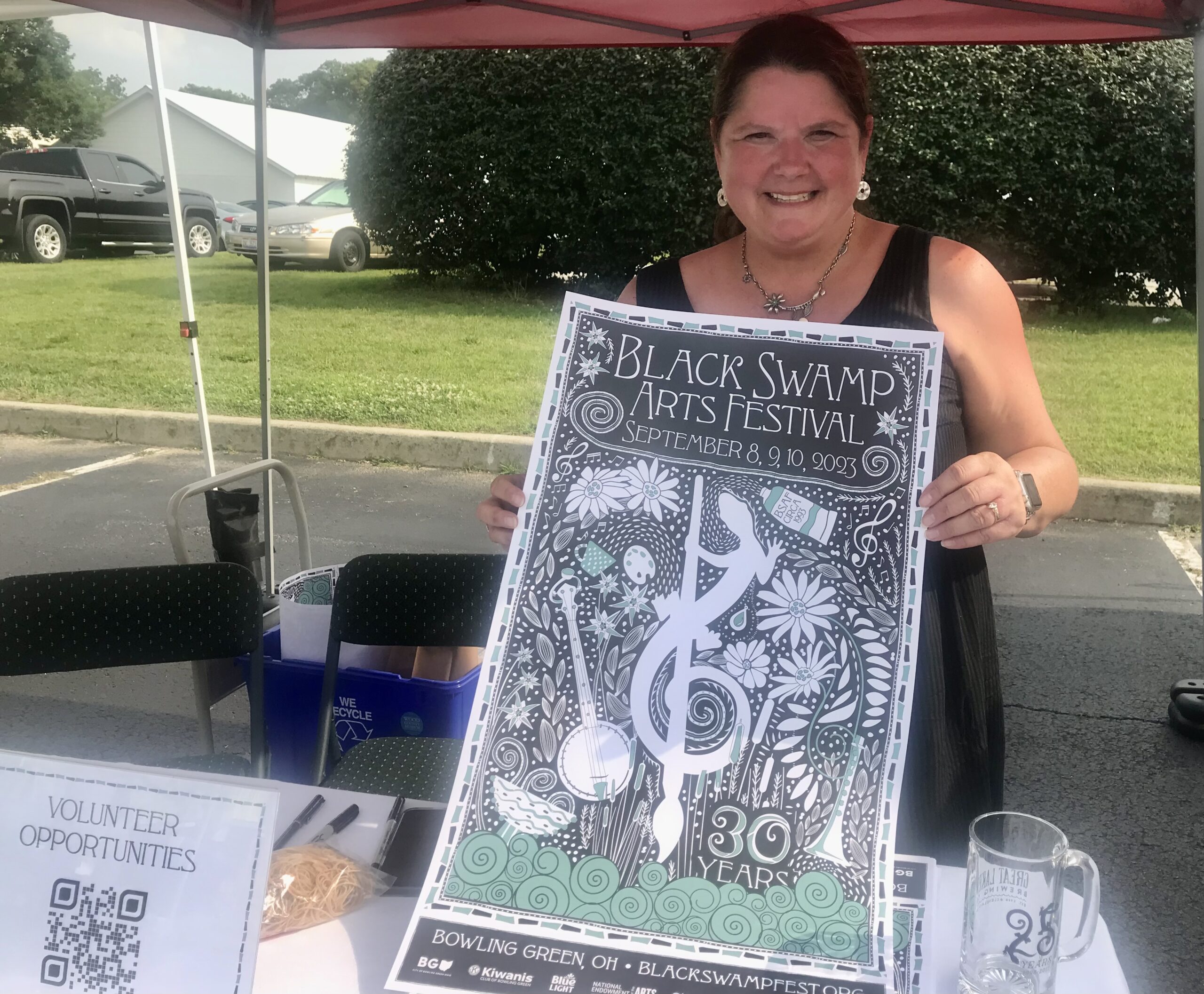By DAVID DUPONT
BG Independent News
For painter Said Oladejo-Lawal winning the Best of Show Award at the Black Swamp Arts Festival provides confirmation of his musical vision.
This is the second time, Oladejo-Lawal has taken top honors at the festival. He won in 2021. This year the award was $2,000.
[RELATED: Top BSAF art honors go to newcomer & repeat winners]
Oladejo-Lawal topped a field of 108 juried artists. Those were selected by jurors from more than 200 applicants.
The Nigerian-born painter said the honor shows people are understanding his vision.
“What I’m trying to explore in painting, trying to paint music and create emotionality through paint is getting through to people,” he said. That feels good.
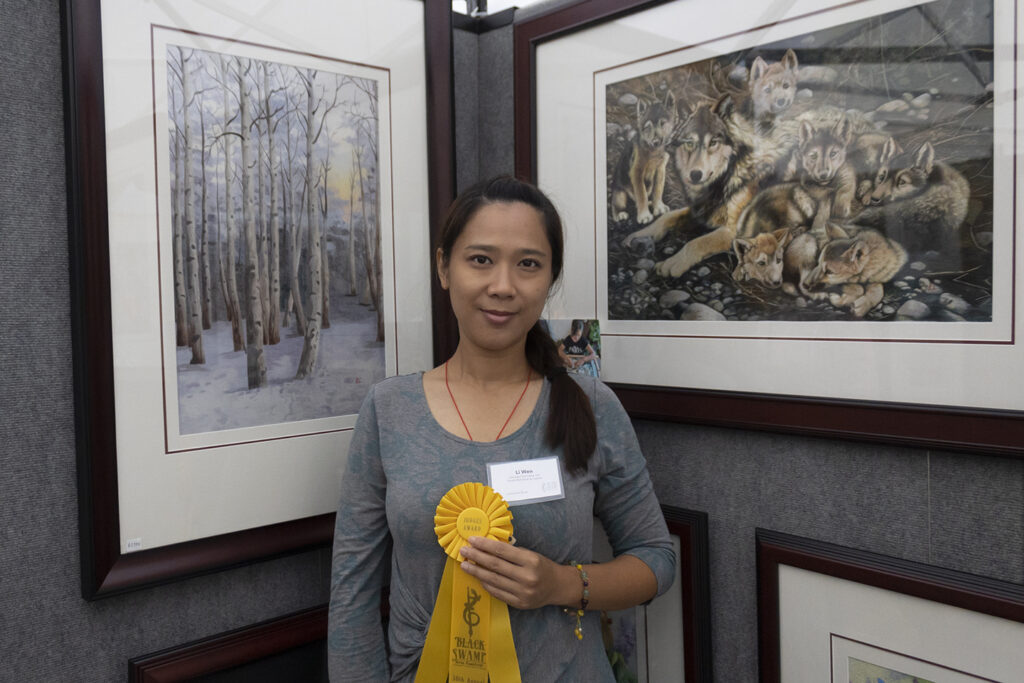
Other winners were:
Best 2-D: Cody Miller, mixed media artist from Columbus, $1,500
Best 3-D: JD Davison, Jewelry artist from Upper Arlington, $1,500.
Judge’s Award: Xiao Xia Zhang Minich, fiber and leather artist from Olmstead Township, $1,000.
Sustainability Award: Shannon Lewis, mixed media artist from Ashland, Kentucky, $500.
Emerging Artist Award: Rachel McFarlane David, wood artist from Reyonldsburg, $500.
Honorable mentions: Robert Schafer (Wood), Ellen Smith (Wood), and Seth Bickis (Glass), $350 each.
In total the festival awarded $8,000 to artists. That’s an increase from last year.
Maria Iafelice, chair of the visual arts committee, said that in recognition of the festival’s 30th year, the planning committee decided to increase the prize money.
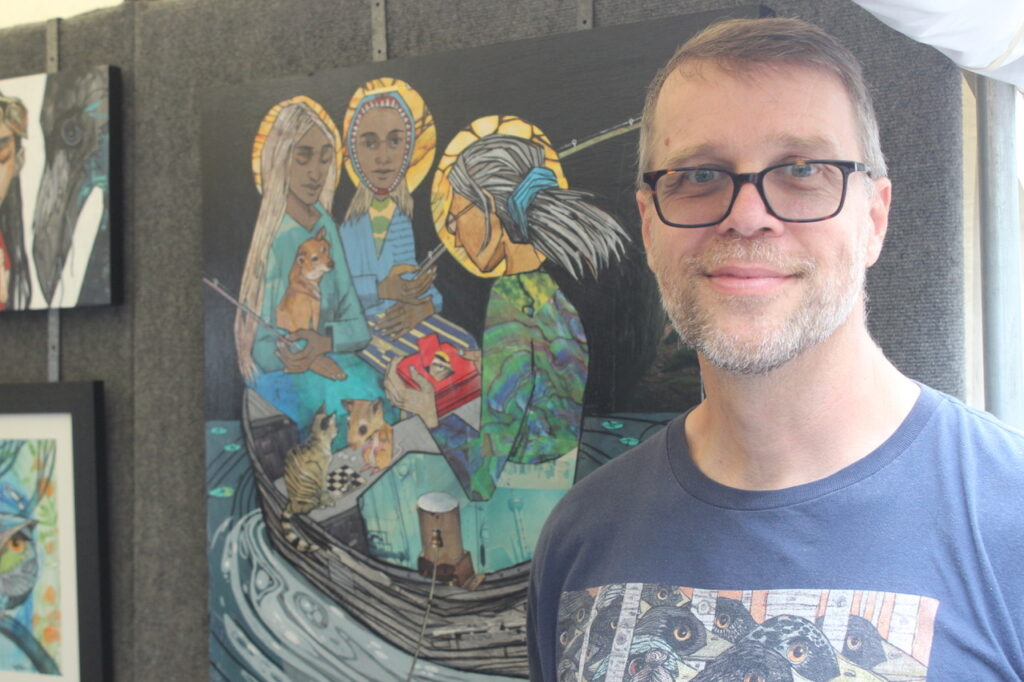
Miller said the generous amount of award money available was a key factor in his attending the show.
Miller said he’s been draw incessantly since he was a child. When he graduated from high school, there was no question that he would study art because that’s the only subject he was good at.
A painting starts with a sketch inspired by some piece of writing that “conveys grace to me.” It could be from the Old Testament, or “Catcher in the Rye,” a fragment of prose by Annie Dillard or a meditation on the prophet Ezra by Danish philosopher Søren Kierkegaard.
The image grows incrementally on the panel board.
The paintings explore a tension that underlies life, he said.
They balance those things “that will freakin’ break your heart and these things that are so incredibly beautiful, and how you have a healthy dialogue with those two things in our lives,” Miller said.
“How do we not let the hard things overshadow and trump out all the beautiful things in our lives and how do you not make everything positive, like toxic positivity.” Miller said his work moves “back and forth between those tensions.”

JD Davison who works together with JD Shipengrover also draw on cross disciplinary inspiration. Both were involved in doing information technology graphic design during the early years of the internet. Shipengrover said that they’ve been life partners and lab partners for 30 years.
They missed the tactile part of creation, so 25 years ago they took a jewelry workshop, and that launched them into jewelry making.
“These particular pieces we’ve been making for the past 10 years,” Davison said.
To create what they call “ microcosms,” he explained, “we zoom in on the surface details of various plants and animals until we find an intricate pattern, and then we hand carve it into acrylic and hand paint the details.”
This blend of science and art does well in a college town, Davison said.
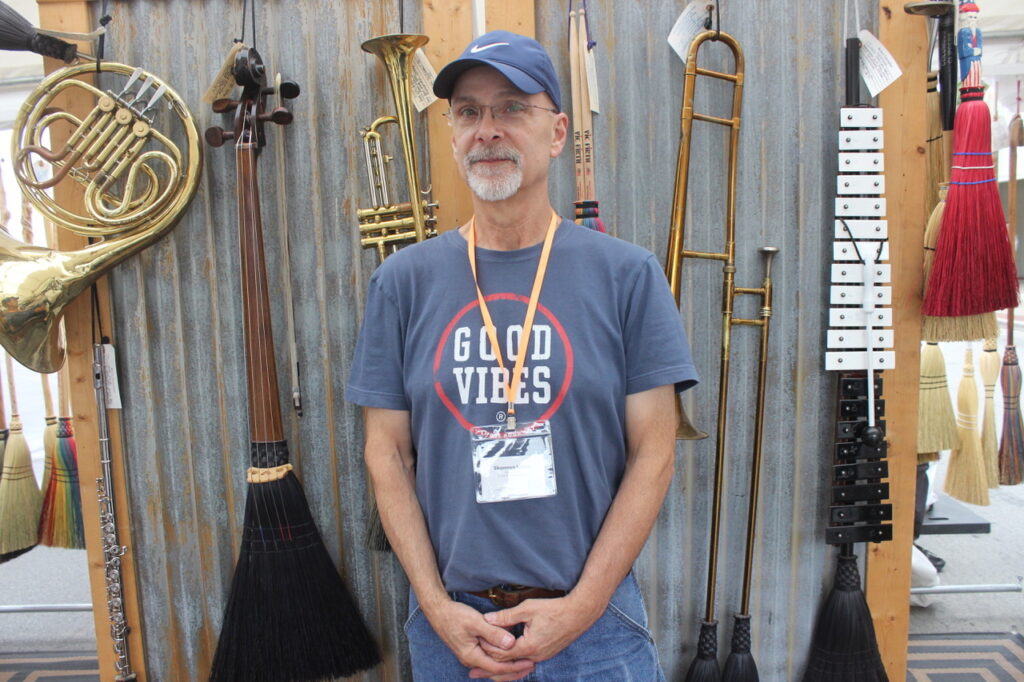
In addition to increasing the prize money, festival also changed its award categories, eliminating the second and third place award, in favor of the judge’s award which honors an artist whose work the jurors find has exceptional merit, but falls outside other criteria.
They also added an award for an artist who makes creative use of sustainable materials, and one for an emerging artist who is in the first five years of their career.
In the case of Lewis, who won the inaugural sustainability award, his work got its start when he was cleaning out a family barn in Kentucky. He found a broom making kit. A math teacher and soccer coach he brought it home and restored it. Then 12 years ago when he retired from coaching, he decided to learn the craft.
At first, he made traditional brooms. Then he did one with an unusual handle and the customer loved it. That got him thinking about how he could “use and repurpose stuff that would end up in a dumpster or landfill.”
That could be an old trombone or a croquet mallet.
He finds items, and sometimes customers at shows will bring him something to convert into a fanciful broom.
In Bowling Green, someone, not surprisingly, brought him a hockey stick.
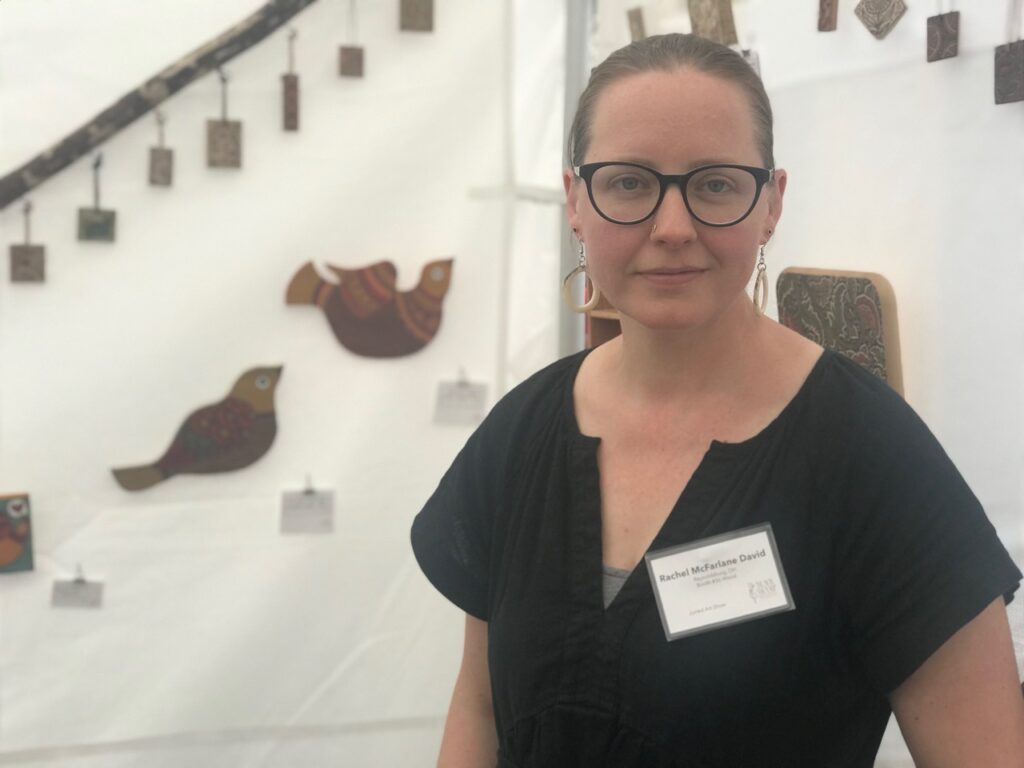
Creating wooden jewelry has been McFarlane David’s fulltime job for four years. She had graduated from Ohio State with a fine arts degree in printmaking and glass. She took up burning designs into wood because “this was something I didn’t have to go to a studio to do. I could just do burning at home.”
Over the years she acquired more tools. Then about five years ago, she did her first art fair, and then “bit the bullet” and quit her office job and launched her own business.

